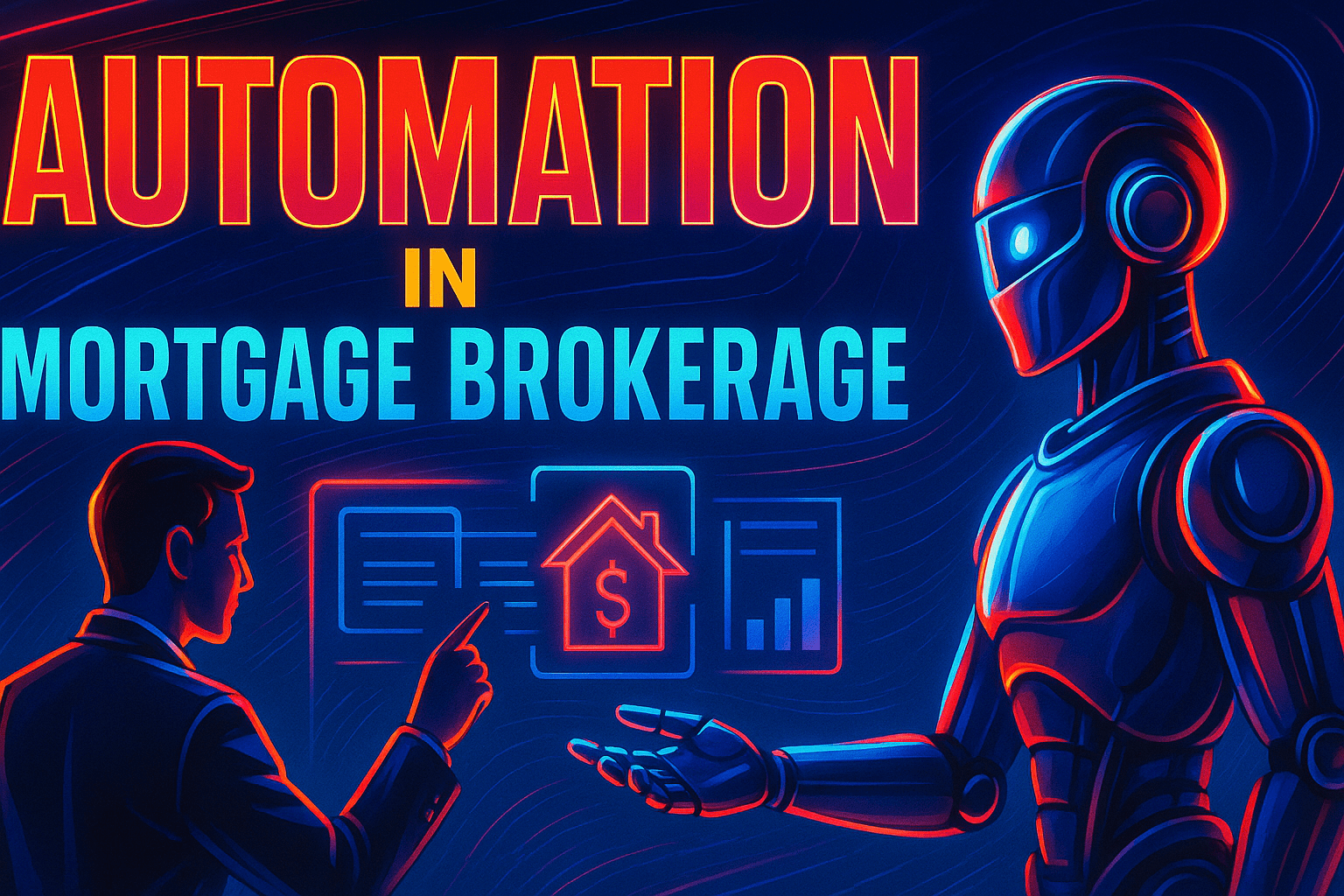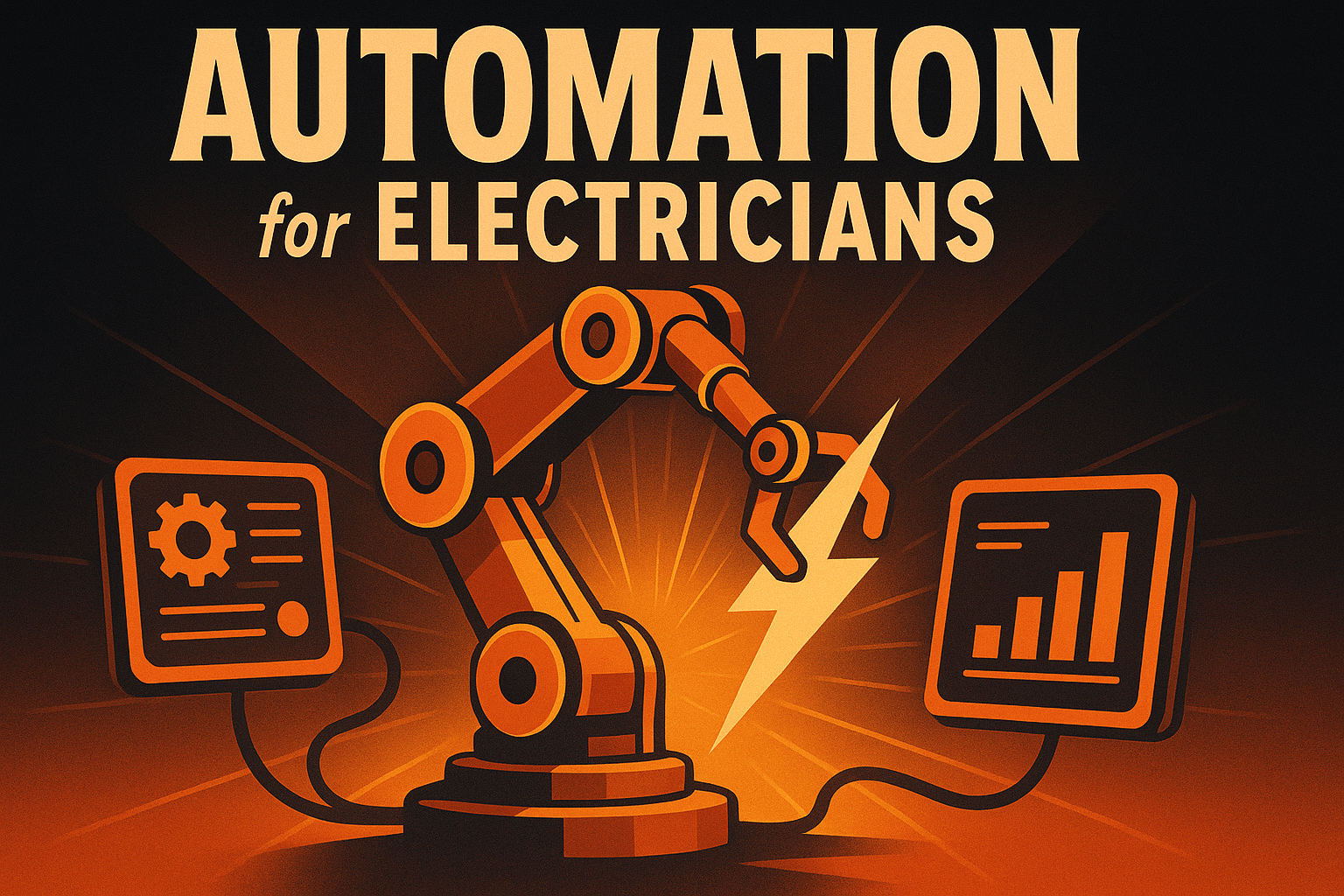How Automation for Mortgage Brokers Reduces Processing Time by 70% While Improving Accuracy
by Design Delulu Editorial · October 15, 2025

Smart, fast, and measurable. Here's how Automation helps Mortgage Brokers win.
The mortgage industry moves at lightning speed, yet many brokers still drown in manual paperwork, data entry errors, and compliance headaches that cost them deals. While you're copying information from PDFs to spreadsheets, your competitors are closing loans in half the time using intelligent automation systems that handle repetitive tasks flawlessly. The gap between automated and manual brokerages isn't just operational—it's existential. Brokers who automate their workflows report 70% faster processing times, 85% fewer data entry errors, and the ability to handle 3x more clients without hiring additional staff.
This shift matters now more than ever because borrowers expect instant responses, lenders demand perfect documentation, and regulatory scrutiny has never been higher. Every manual step in your process creates friction that pushes clients toward faster competitors. Every duplicated data entry point introduces compliance risk. Every hour spent on administrative tasks is an hour not spent building relationships or closing deals. Automation for mortgage brokers transforms these pain points into competitive advantages, turning your brokerage into a precision machine that delivers exceptional client experiences while maximizing your capacity and profitability.

Why Mortgage Brokers Are Losing Deals Without Automation
Traditional mortgage brokerage operations rely on dozens of disconnected systems and manual handoffs that create catastrophic bottlenecks. A typical loan application touches 15-20 different platforms—from CRM systems to document management, pricing engines to compliance checkers—with brokers acting as human middleware copying data between each one. This fragmented approach doesn't just waste time; it creates systematic failures that destroy client trust and profitability.
The hidden costs of manual processes include:
- Data entry errors that torpedo deals: Even a 2% error rate means one in fifty applications contains mistakes that delay closing or require expensive corrections
- Response time disadvantages: Manual document collection takes 3-5 days while automated systems gather everything in hours, and speed determines who wins the client
- Compliance exposure: Missing audit trails and inconsistent documentation create regulatory vulnerabilities that can result in fines or license suspension
- Capacity constraints: Manual brokers plateau at 8-12 active deals per month while automated competitors handle 25+ simultaneously
- Client experience gaps: Borrowers expect real-time updates and instant document access, not phone tag and email chains
- Revenue leakage: Administrative overhead consumes 40-50% of broker time that could generate commissions
The brokers thriving in today's market have recognized that automation isn't optional technology—it's fundamental infrastructure. They've replaced manual chaos with systematic workflows that handle routine tasks flawlessly, freeing them to focus on relationship building, complex problem-solving, and strategic growth. Their automation systems work 24/7, never take vacations, and scale effortlessly during busy periods.
The Complete Automation Framework for Mortgage Brokers
Successful mortgage broker automation follows a strategic framework that addresses the entire loan lifecycle—from lead capture through funding and beyond. This isn't about implementing random tools; it's about creating an integrated ecosystem where data flows seamlessly and every touchpoint delivers value.
Phase 1: Lead Capture and Qualification Automation
The first impression determines whether prospects become clients. Automated lead capture systems respond instantly to inquiries, gather preliminary information, and route qualified prospects to the right broker—all without human intervention. Smart forms pre-qualify borrowers by asking strategic questions that trigger different workflows based on responses.
Key automation components:
- Intelligent web forms: Dynamic questionnaires that adapt based on answers and capture complete borrower profiles
- Instant response triggers: Automated emails and SMS that acknowledge inquiries within seconds and set clear next steps
- Lead scoring algorithms: Systems that prioritize hot prospects and flag red flags before wasting broker time
- Calendar integration: Self-service scheduling that eliminates phone tag and fills your pipeline automatically
- CRM auto-population: Contact information flows directly into your database with proper tagging and categorization
Phase 2: Application and Document Management
Document collection represents the biggest bottleneck in traditional brokerage operations. Automated systems transform this nightmare into a streamlined process that borrowers actually enjoy. Digital document portals guide clients through uploads, automatically verify completeness, and extract data using optical character recognition (OCR) technology.
Implementation steps:
- Deploy secure client portals: Branded platforms where borrowers upload documents, check status, and receive updates
- Configure smart checklists: Conditional document requirements that adapt based on loan type, property, and borrower situation
- Enable OCR data extraction: Automated reading of pay stubs, tax returns, and bank statements that populates your application
- Build validation rules: Systems that flag missing pages, outdated documents, or quality issues before submission
- Set up automatic reminders: Escalating notifications that nudge borrowers without broker involvement
Phase 3: Processing and Underwriting Automation
Once documents arrive, automation accelerates verification and submission. Intelligent workflow engines orchestrate tasks across team members, track progress against deadlines, and alert you to exceptions requiring attention. Data from uploaded documents auto-populates loan applications, eliminating transcription errors and saving hours per file.
Critical automation capabilities:
- Automated 1003 population: Data extracted from documents flows directly into URLA fields
- Calculation automation: DTI ratios, income averaging, and asset verification computed instantly
- Compliance checking: Automated scans for red flags, missing disclosures, and regulatory requirements
- Lender submission automation: Files transmitted to underwriting platforms with proper formatting and documentation
- Condition tracking: Automated management of underwriter requests with borrower notifications and deadline monitoring

Phase 4: Communication and Client Experience
Borrowers crave transparency and responsiveness. Automated communication systems deliver both at scale. Milestone-based messaging keeps clients informed throughout the process, while intelligent notification systems alert them to required actions and upcoming deadlines. This reduces inbound inquiries by 60% while dramatically improving satisfaction scores.
Communication automation includes:
- Status update sequences: Automated emails and texts at key milestones (application received, submitted to underwriting, clear to close)
- Educational content delivery: Relevant guides and videos sent based on where borrowers are in the process
- Action reminders: Smart notifications about documents needed, rates expiring, or closing appointments
- Review request automation: Post-closing sequences that generate testimonials and referrals
- Personalization at scale: Dynamic content that addresses borrowers by name and references their specific loan details
Essential Automation Tools and Technologies
Building an effective automation stack requires selecting tools that integrate seamlessly and address your specific workflow needs. The mortgage broker technology landscape has matured significantly, offering specialized solutions that outperform generic business automation platforms.
Core Platform Categories
| Platform Type | Purpose | Key Features | Integration Priority |
|---|---|---|---|
| Mortgage CRM | Central database and workflow hub | Contact management, pipeline tracking, task automation, reporting | Critical - connects everything |
| POS Systems | Application processing and submission | 1003 automation, product pricing, lender connections, e-signatures | Critical - core operations |
| Document Management | File collection and organization | Client portals, OCR extraction, compliance folders, audit trails | High - eliminates bottlenecks |
| Marketing Automation | Lead nurturing and communication | Email sequences, SMS campaigns, landing pages, lead scoring | High - drives growth |
| Analytics Platforms | Performance tracking and optimization | Conversion tracking, attribution, dashboards, forecasting | Medium - enables improvement |
Integration Architecture Best Practices
Your automation tools must communicate with each other to eliminate manual data transfer. Modern integration approaches include native connections, API-based workflows, and middleware platforms like Zapier or Make. Single-source-of-truth architecture ensures data consistency by designating your CRM as the master database and syncing information bidirectionally with satellite systems.
Integration checklist:
- CRM to POS: Contact info, loan details, and status updates flow both directions
- Document portal to CRM: Upload notifications and file metadata sync automatically
- Marketing automation to CRM: Lead scoring, engagement data, and campaign attribution
- Calendar to CRM: Appointment scheduling creates tasks and updates contact records
- Analytics to all systems: Event tracking captures key actions across your entire stack
Measuring Automation ROI: KPIs That Matter
Automation investments must deliver measurable returns. The most successful mortgage brokers track specific metrics that connect technology improvements to business outcomes. These KPIs reveal where automation creates value and identify opportunities for further optimization.
Operational Efficiency Metrics
Time-based performance indicators:
- Application-to-submission time: Track average days from initial app to lender submission (target: under 5 days)
- Document collection duration: Measure how quickly borrowers provide complete documentation (target: under 48 hours)
- Processing time per file: Calculate total staff hours required per loan (target: reduce by 50%)
- Response time averages: Monitor how fast you respond to leads and borrower questions (target: under 15 minutes)
- Close rate velocity: Track time from clear-to-close to funding (target: under 72 hours)
Quality and Accuracy Metrics
Speed means nothing if accuracy suffers. Track these quality indicators to ensure automation improves rather than compromises your work product:
- Data entry error rates: Measure mistakes in applications and disclosures (target: under 0.5%)
- Resubmission frequency: Track how often files bounce back from underwriting (target: under 10%)
- Compliance incident rate: Monitor violations, missing disclosures, and audit findings (target: zero)
- Document completeness: Measure percentage of initial submissions with all required docs (target: over 95%)
Business Growth Metrics
Revenue and capacity indicators:
- Loans per processor: Track how many active files each team member handles (target: 20+ with automation)
- Conversion rates: Measure lead-to-app and app-to-close percentages (target: 15%+ improvement)
- Revenue per employee: Calculate total commission divided by staff count (target: double pre-automation baseline)
- Client satisfaction scores: Survey borrowers about their experience (target: 4.5+ stars)
- Referral generation rate: Track percentage of closed clients who refer business (target: over 40%)

Implementation Roadmap: From Manual to Automated
Transitioning to automated operations requires careful planning and phased execution. Rushing implementation creates chaos; moving too slowly means prolonged inefficiency. This proven roadmap balances speed with stability, delivering quick wins while building toward comprehensive automation.
Weeks 1-2: Discovery and Planning
Begin by documenting your current state. Map every step in your loan process from lead capture through post-closing. Identify bottlenecks, error-prone tasks, and time sinks. Prioritize automation opportunities based on potential impact and implementation difficulty. Quick wins include automated lead responses, document reminders, and status update communications.
Discovery deliverables:
- Process flow diagrams showing current workflows with time estimates for each step
- Pain point inventory ranked by frequency and severity
- Technology audit listing all current systems and integration status
- Automation priority matrix identifying phase 1, 2, and 3 initiatives
- Success metrics definition with baseline measurements and improvement targets
Weeks 3-4: Foundation Building
Establish your core automation infrastructure. This includes selecting and configuring your primary platforms, building integration connections, and creating workflow templates. Focus on data architecture first—defining standard fields, establishing naming conventions, and setting up synchronization rules. Clean data enables everything that follows.
Foundation tasks:
- Configure CRM with custom fields, pipelines, and automation rules
- Set up document management portals with branded templates
- Build email and SMS templates for common communications
- Create integration connections between core platforms
- Establish analytics tracking for baseline measurement
Weeks 5-6: Deployment and Training
Launch your automation systems with a pilot group of new files. Don't migrate existing loans yet—test with fresh applications to validate workflows. Train your team thoroughly on new processes, emphasizing how automation changes their roles rather than replaces them. Brokers shift from administrative tasks to relationship management; processors focus on exceptions rather than routine data entry.
Weeks 7-8: Optimization and Scaling
Monitor performance metrics closely and iterate based on real-world usage. Identify friction points where automation creates confusion or extra work. Refine workflows based on feedback from team members and borrowers. Gradually expand automation to cover more scenarios and edge cases. This continuous improvement mindset separates automation success stories from expensive failures.
Common Automation Pitfalls and How to Avoid Them
Even well-intentioned automation initiatives fail when brokers make predictable mistakes. Learning from others' errors accelerates your success and prevents costly setbacks.
Pitfall 1: Automating Broken Processes
Automation amplifies whatever you automate—including inefficiency. If your manual process is clunky, automating it creates a faster mess. Fix the workflow first, then automate the improved version. Challenge every step: Is this necessary? Can we eliminate it? Can we simplify it? Only automate processes that make sense.
Pitfall 2: Over-Automating Client Relationships
Borrowers want efficiency, not robots. Balance automation with authentic human connection. Automate the routine; personalize the meaningful. Let systems handle status updates and document requests, but ensure real conversations happen at critical moments—initial consultation, pre-approval delivery, closing celebration. The best mortgage brokers use automation to create more time for relationship building, not less.
Pitfall 3: Neglecting Data Hygiene
Automated systems depend on clean, consistent data. Garbage in, garbage out applies ruthlessly. Establish data governance standards from day one: required fields, standardized formats, validation rules, and regular cleanup routines. Assign data stewardship responsibility and audit quality monthly.
Pitfall 4: Ignoring User Experience
Automation should feel seamless to borrowers, not like navigating a maze. Test every automated touchpoint from the client perspective. Are emails clear? Are portals intuitive? Do reminders help or annoy? Friction-free experiences differentiate great automation from merely functional automation. Get feedback early and often.
Pitfall 5: Insufficient Change Management
Technology adoption fails when teams resist change. Involve staff in planning, communicate benefits clearly, provide comprehensive training, and celebrate wins. Address concerns about job security by emphasizing how automation eliminates drudgery and enables higher-value work. Change management determines whether your automation investment delivers promised returns or gathers digital dust.
Advanced Automation Strategies for Competitive Advantage
Once core automation is operational, leading brokers implement advanced strategies that create durable competitive advantages. These sophisticated approaches transform brokerages into technology-powered businesses that competitors struggle to match.
Predictive Analytics and Machine Learning
Leverage historical data to predict outcomes and optimize decisions. Machine learning models can forecast which leads will convert, estimate time-to-close, identify files at risk of falling through, and recommend optimal pricing strategies. These insights enable proactive management rather than reactive firefighting.
Automated Referral Partner Management
Systematize relationships with real estate agents, financial planners, and other referral sources. Automated systems track referral attribution, trigger thank-you communications, provide partners with real-time deal status, and nurture relationships with valuable content. Partner automation scales your referral network without proportional time investment.
Dynamic Content Personalization
Move beyond basic mail merge to truly personalized communications. Advanced systems deliver content tailored to borrower demographics, loan type, purchase price range, and stage in the journey. Contextual relevance dramatically improves engagement and conversion compared to one-size-fits-all messaging.
Compliance Automation and Audit Trails
Protect your license with automated compliance management. Systems can verify disclosure timing, validate mandatory waiting periods, ensure proper documentation retention, and create comprehensive audit trails. Automated compliance shifts from defensive necessity to competitive advantage—enabling faster closes while reducing regulatory risk.
Building Your Automation Team
Successful automation requires both technical expertise and process knowledge. Small brokerages may need external partners initially; larger operations benefit from dedicated internal resources. Define clear roles and responsibilities for automation governance, implementation, and optimization.
Key roles in automation success:
- Process Owner: Senior broker who understands workflows intimately and champions automation initiatives
- Technical Lead: Person comfortable with platforms, integrations, and troubleshooting (internal or consultant)
- Data Steward: Guardian of data quality who maintains standards and conducts regular audits
- Training Coordinator: Ensures team members understand and adopt new automated workflows
- Performance Analyst: Tracks KPIs, identifies optimization opportunities, and reports on ROI
In small teams, individuals may wear multiple hats. The critical success factor is assigning clear accountability rather than treating automation as everyone's job (which becomes no one's job).
Future-Proofing Your Automation Strategy
The mortgage technology landscape evolves rapidly. Build flexibility into your automation architecture to adapt as new capabilities emerge. Prioritize platforms with open APIs, active developer communities, and regular feature updates. Modular design allows swapping components without rebuilding everything.
Stay informed about emerging technologies that will reshape mortgage brokerage:
- AI-powered underwriting: Instant decisioning that accelerates approvals from days to minutes
- Blockchain verification: Immutable audit trails and instant income/asset verification
- Voice interfaces: Borrowers asking Alexa about loan status and uploading documents via smart speakers
- Predictive pricing: Machine learning models that recommend optimal timing for rate locks
- Automated appraisals: Computer vision and data analytics replacing traditional property valuations
Position your brokerage to capitalize on these innovations by maintaining clean data, standardized processes, and modern technical infrastructure. The brokers who thrive through the next decade of industry transformation will be those who embrace automation today.
Frequently Asked Questions
Let’s level up your Mortgage Brokers business
Need services that actually move the needle for Mortgage Brokers? See our approach, pricing, and timelines—then book a quick call.
Additional Resources
- Schedule Strategy Session
Book a 30-minute consultation to discuss your specific automation needs and receive a custom implementation roadmap
- View Our Portfolio
Explore real-world automation success stories from mortgage brokers who transformed their operations with our proven systems
- Free Automation Tools
Access our library of free calculators, templates, and resources to start automating your mortgage brokerage today
Related Reading

Discover how automation for electricians streamlines scheduling, invoicing, lead tracking, and customer follow-ups to boost revenue and efficiency. Get started today.

Discover how automation streamlines furniture & home decor operations with GA4 tracking, attribution modeling, and data-driven dashboards. Get your 90-day implementation roadmap.
